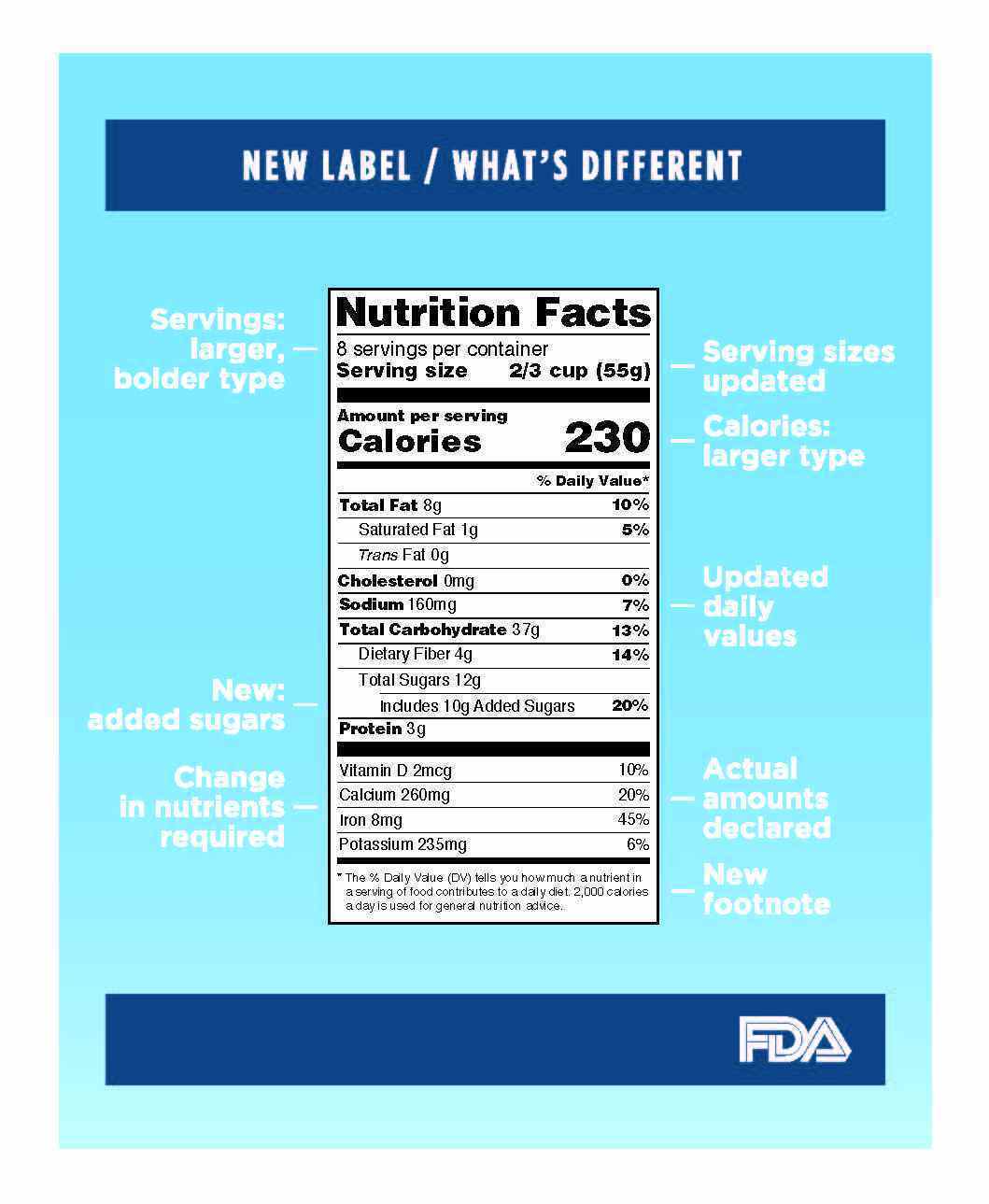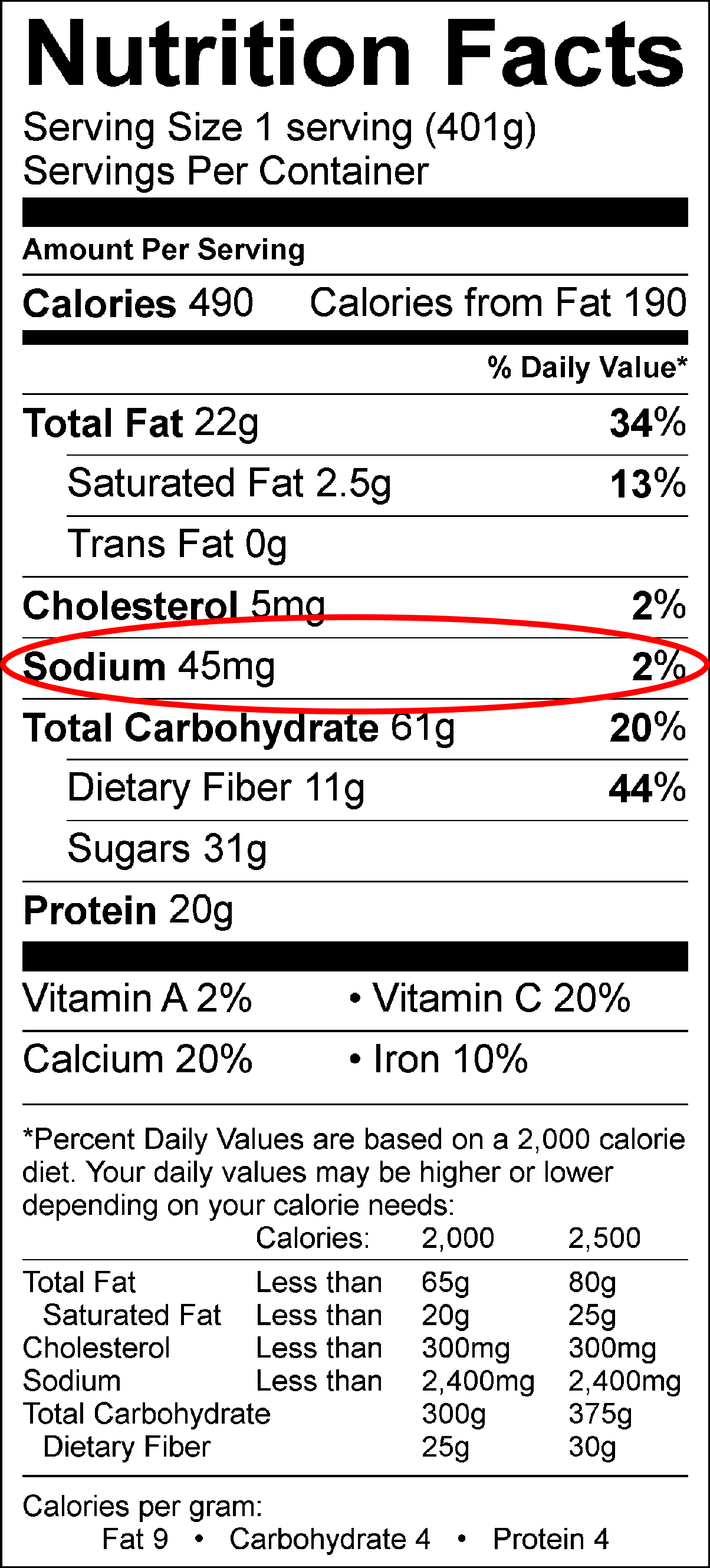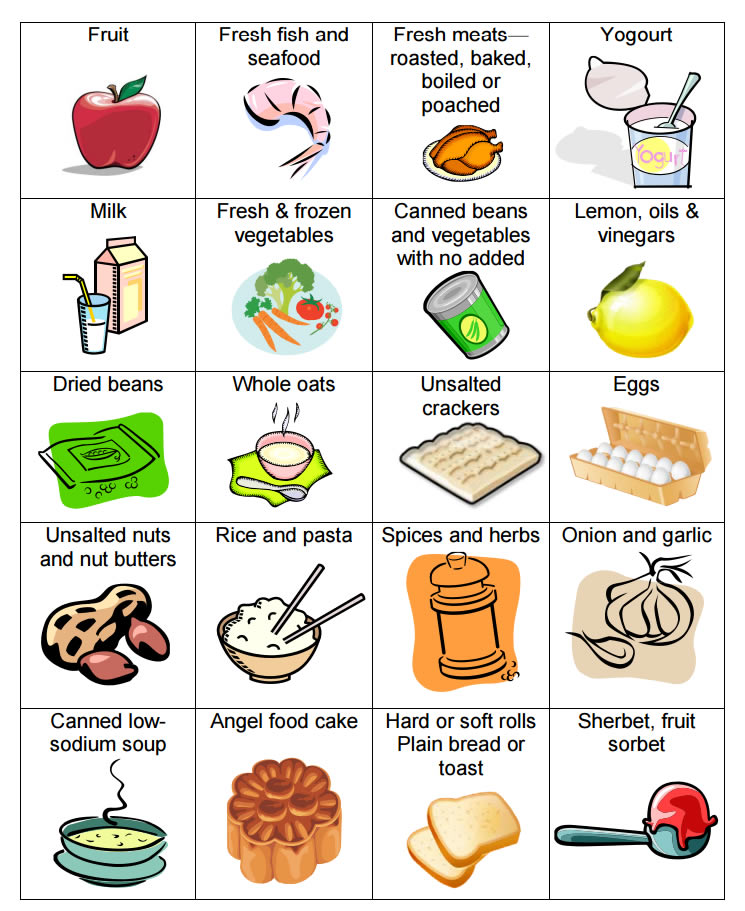44 salt is listed as what on most food labels
How to Read the Nutrition Facts Label on Packaged Foods Sodium. Many people get far too much salt, or sodium. Most of it is in packaged foods and restaurant items. Limit salt to 2,300 milligrams (about 1 teaspoon) daily. If you have high blood pressure ... Food Labels: Read It Before You Eat It! - AAAAI Ingredients of these most common eight allergens must be labeled with clearly recognized English names of the food source as listed above. The "contains" statement is "voluntary", but if used, must include ALL of the allergenic ingredients from the list of eight allergenic sources as described in item 14 of the 2006 guidance document.
Sodium and Food Labels - Sutter Health It's important to note that all nutritional labels list amounts of nutrients per serving. This item, for example, lists 16 servings in the entire container. The sodium level is 120 mg for one serving. That means if you drink the entire container, you'll get 1,920 mg sodium! That could be a critical error if you're not careful.

Salt is listed as what on most food labels
Salt and Sodium - A guide for Food Labelling - Medic8 A good rule of thumb is to multiply the amount of sodium in a food product by 2.5. If a food contains 2 grams of sodium then it will contain 5 grams of salt: 2 grams of sodium x 2.5 = 5 grams of salt (in total) This will give you both the salt and sodium levels. We do need some sodium and salt as they help to transport nutrients around our ... Label Reading the Healthy Way - Alberta Health Services Salt (sodium) Sodium is found in salt. Most of the sodium we eat comes from processed food containing salt or sodium. To reduce your intake: Choose fewer processed and packaged foods. Look for unsalted, low salt, and no-added salt foods. Read ingredient lists on packages. Limit foods with salt, sodium, or soda as one of the first 3 ingredients. Sodium in Your Diet | FDA 25.2.2022 · Despite what many people think, most dietary sodium (over 70%) comes from eating packaged and prepared foods—not from table salt added to food when cooking or eating.
Salt is listed as what on most food labels. Understanding Food Labels - Nutrition: Science and Everyday Application The value printed on the Nutrition Facts panel is the percent DV, which tells you how much one serving of the food contributes towards meeting the daily requirement for that nutrient. The FDA uses the following definitions for interpreting the %DV on food labels:4. 5%DV or less means the food is low in a nutrient. Understanding Ingredients on Food Labels | American Heart … Mar 06, 2017 · But sugar can also be listed as high-fructose corn syrup or corn syrup, agave nectar, barley malt syrup or dehydrated cane juice, to name just a few. Read more about sugar and sweeteners. Sodium also has several names. There’s salt, sodium benzoate, disodium or monosodium glutamate (MSG). Learn more about salt and sodium. “Sodium nitrite is ... Sodium and Your CKD Diet: How to Spice Up Your Cooking Simple rule of thumb: If salt is listed in the first five ingredients, the item is probably too high in sodium to use. All food Nutrition Facts labels have milligrams (mg) of sodium listed. Follow these steps when reading the sodium information on the label: Know how much sodium you … Sodium and Food Sources | cdc.gov About 25% comes from foods made in restaurants, where it can be difficult to see how much sodium is in your meal. Brands of food matter: Different brands of the same foods may have different sodium levels. For example, sodium in chicken noodle soup can vary by as much as 840 mg per serving. Foods That Seem Healthy May Have High Levels of Sodium
Dietary Recommendations for Healthy Children | American Heart ... Milk listed is fat -free (except for children under the age of 2 years). If 1%, 2%, or whole-fat milk is substituted, this will utilize, for each cup, 19, 39, or 63 kilocalorie of discretionary calories and add 2.6, 5.1, or 9.0 grams of total fat, of which 1.3, 2.6, or 4.6 grams are saturated fat. Food labels - Better Health Channel Ingredients are listed on products in descending order by weight so that the first ingredient listed is always present in the largest amount and can be useful when comparing products. Fats, sugars and salt may be listed under several different names. List of ingredients and allergens on food labels - Canadian Food ... Health Canada and the CFIA encourage food manufacturers and importers to use the title "May contain:" or "May contain" to introduce the cross-contamination statement on food labels. If a title is used, it must appear in bold when the statement appears on the same line as the ingredient list or the "food allergen source, gluten and added sulphites" statement [B.01.010.4(1)(d), FDR ]. Sodium on the Nutrition Facts Label | FDA Most Americans eat too much sodium and diets higher in sodium are associated with an increased risk of developing high blood pressure. The Nutrition Facts label is a handy tool you can use every...
Food labels & nutritional information | Raising Children Network Sep 23, 2020 · The nutritional information on food labels helps you work out how healthy a food is. But keep in mind that some of the healthiest foods can be unlabelled – fresh fruit and vegetables, wholegrain breads, nuts, lentils, beans, fresh lean meats and fish. Ingredients on food labels. In Australia, food manufacturers must be truthful on their food ... Understanding Food Labels | The Nutrition Source | Harvard T.H. These statements describe the nutrients in a food beyond what is listed on the Nutrition Facts label, intended to showcase a health benefit of the food. An example is “Contains 100% Vitamin C.” Most terms like “low sodium,” “high fiber,” “reduced fat,” and “good source of” are regulated by the FDA, and the nutrient amounts must meet specific guidelines to make these claims. Food Labels | CDC In general, eat more foods that are higher in vitamins, minerals (such as calcium and iron), and fiber. Eat fewer foods that are higher in added sugars, saturated fat, and sodium (salt), and avoid trans fat. Keep in mind that the % Daily Value of each nutrient, such as total fat of 10% in the example below, is based on eating 2,000 calories a day. How to Read a Food Label to Limit Sodium: Care Instructions Read ingredient lists on food labels. Read the list of ingredients on food labels to help you find how much sodium is in a food. The label lists the ingredients in a food in descending order (from the most to the least). If salt or sodium is high on the list, there may be a lot of sodium in the food. Know that sodium has different names.

Sugar and Truth in Labeling: New Labels Revealing Hidden / "Added Sugars" - OTHERSIDEoftheFAME ...
How to read food labels: MedlinePlus Medical Encyclopedia Always check the serving size first. All the information on the label is based on the serving size. Many packages contain more than 1 serving. For example, the serving size for spaghetti is most often 2 ounces (56 grams) uncooked, or 1 cup (0.24 liters) cooked. If you eat 2 cups (0.48 liters) at a meal, you are eating 2 servings.
What information is on a food label? - From Hunger To Hope What are the eight bits of information on food labels? The quantity of nutrients in the food is listed on the nutrition information panel, which includes: vigour (kilojoules or calories) protein. fat. fat that has become saturated. carbohydrate. sugars. sulfate (salt). People often inquire about how to read a food label.
What do the sodium (salt) numbers mean on food labels? - Dr. Gourmet For sodium, the Nutrition Facts label is required to list the number of milligrams of sodium per serving. For instance, in the Cheeseburger Macaroni Hamburger Helper the sodium per serving is listed as 760 milligrams (mg). To make it a bit easier the regulations also require that the percent of daily recommendations (RDA) is listed as well.
10 Foods High in Salt That You Should Avoid Consuming Take note that a small tomato contains 11 mg of sodium. 5. Canned Soups and Vegetables. Food in a can is basically processed with lots of sodium and is a huge sodium bomb. Before purchasing canned soups or vegetables, check the nutrient content in its label. Some canned soups can have about 1,300 mg of sodium.
Food labels: understanding what's in my food | Sanitarium Health Food ... 1. Nutrition Information Panel. Nutrition information panels are the detailed boxes on many food products that list the energy, protein, fat, carbohydrate, sugar, dietary fibre, sodium and potentially other nutrients contained in the food. The good thing is they all look the same so once you've become familiar with the format, nutrition ...
How to Read a Food Label to Limit Sodium: Care Instructions The label lists the ingredients in a food in descending order (from the most to the least). If salt or sodium is high on the list, there may be a lot of sodium in the food. Know that sodium has different names. Sodium is also called monosodium glutamate (MSG), sodium citrate, sodium alginate, and sodium phosphate. Read Nutrition Facts labels
Understanding of sodium content labeled on food packages by ... - Nature Salt reduction is one of the most important lifestyle modifications for the prevention of hypertension. The health promotion law regulates the labeling of the nutrient content of food in Japan and,...
Food labels - NHS Some front-of-pack nutrition labels use red, amber and green colour coding. Colour-coded nutritional information tells you at a glance if the food has high, medium or low amounts of fat, saturated fat, sugars and salt: red means high amber means medium green means low In short, the more green on the label, the healthier the choice.
Overview of Food Ingredients, Additives & Colors | FDA The Food and Drug Administration (FDA) maintains a list of over 3000 ingredients in its data base "Everything Added to Food in the United States", many of which we use at home every day (e.g ...
Understanding Ingredients on Food Labels - Professional Heart Daily But sugar can also be listed as high-fructose corn syrup or corn syrup, agave nectar, barley malt syrup or dehydrated cane juice, to name just a few. Read more about sugar and sweeteners. Sodium also has several names. There's salt, sodium benzoate, disodium or monosodium glutamate (MSG). Learn more about salt and sodium .
Different Names for Sodium in Food | Healthy Eating | SF Gate When trying to eliminate sodium from your diet, scan the ingredient list before eating or drinking anything. Any ingredient with "sodium" or "Na" -- the chemical name for sodium -- in its name...
Is Sodium the Same Thing as Salt? - Eatright.org The best way to learn how much sodium is in particular foods is by reading the Nutrition Facts label: On the label, look for foods that are lower in sodium. Choose foods with less than 120 milligrams of sodium per serving. Look for the words salt-free, sodium-free, very low sodium and low sodium on the label.
Food Labeling & Nutrition | FDA Food labeling is required for most prepared foods, such as breads, cereals, canned and frozen foods, snacks, desserts, drinks, etc. Nutrition labeling for raw produce (fruits and vegetables) and...
List of ingredients and allergens on food labels - Food labels ... Health Canada and the CFIA encourage food manufacturers and importers to use the title "May contain:" or "May contain" to introduce the cross-contamination statement on food labels. If a title is used, it must appear in bold when the statement appears on the same line as the ingredient list or the "food allergen source, gluten and added sulphites" statement [B.01.010.4(1)(d), FDR ].
How To Read Food and Beverage Labels - National Institute on Aging Most older adults exceed the recommended limits for saturated fats, sodium, and added sugars. Compare and choose foods to get less than 100% DV of these each day, making sure to adjust for how many calories are in your diet. Additionally, many older adults do not get the recommended amounts of dietary fiber, vitamin D, calcium, and potassium.
How to understand food labels - Eat For Health The Nutrition Information Panel on a food label offers the simplest and easiest way to choose foods with less saturated fat, salt (sodium), added sugars and kilojoules, and more fibre. It can also be used to decide how large one serve of a food group choice or discretionary food would be and whether it's worth the kilojoules.
What Sodium Labels Mean: A Guide to Decoding Sodium Labels - Kitchn Reduced (or Less) Sodium: This label means that the sodium level in the product has been reduced by 25 percent per serving from the original or a competitor's product. And if that product started with over 500mg sodium per serving, then you're still talking about 375mg of sodium per serving.










Post a Comment for "44 salt is listed as what on most food labels"